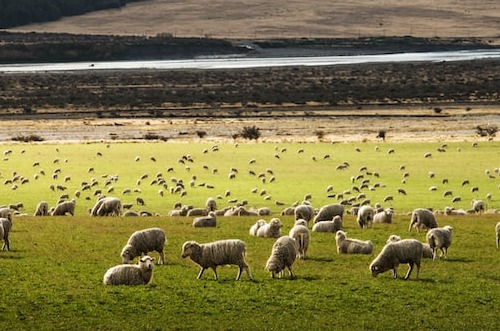
In W25 in the lamb and mutton landscape, Australian sheep and lamb yardings experienced a significant increase of 37% WoW, resulting in a total of 180.3 thousand lambs. As new-season lambs make their way into the market, older-season lambs are also being offered. The mutton indicator saw a throughput increase of 15 thousand heads as farmers sell off older ewes that were retained during the rebuild period. This improvement in throughput is observed across all indicators, with the Light Lamb indicator witnessing a rise of 9.5 thousand heads. However, this increased supply coupled with reduced sale yard activity led to downward pressure on prices. The Light Lamb indicator dropped by USD 0.41 WoW, with Forbes contributing the most at 13% but trading only USD 0.04 above the Australian average. Dubbo, contributing 11% to the indicator, had an average price of USD 0.23 below the Australian average. Restocker lambs also experienced a decline of USD 0.56 WoW, accompanied by a throughput increase of 5.7 thousand heads. Among the restockers, Corowa, Wagga Wagga, and Ballarat fetched the highest premiums, while Guyra made the second-largest contribution to the indicator, trading at the fourth-highest average price. There has been a notable increase in the movement of grain-fed lambs. Regarding slaughter volumes, both lamb and sheep slaughter experienced similar trends, with lamb slaughter approaching the levels registered in 2021 and 2022. In New South Wales (NSW), lamb slaughter dropped by 33% WoW, the lowest weekly lamb slaughter since the end of 2021. Victoria also experienced a decline in lamb slaughter, reaching 177.64 thousand heads, in line with the usual trend of plant closures for winter maintenance. Sheep slaughter also eased to 132.69 thousand heads but remained 66% higher compared to the same period in 2022.
In May-2023, Australian mutton exports increased by 68% YoY, the second highest shipment month in 2023, driven by better supply, with sheep slaughter up 51% YTD. Australian mutton shipments were mainly destined for China, accounting for 44% of exports, Malaysia (10%), and Saudi Arabia (5%). It's worth noting that Middle Eastern countries have increased import volumes of Australian mutton, but have lost market share, falling from 19% in 2022 to 15% in 2023. The 12-month moving average line is increasing, but remains slightly behind the drought-driven peaks of 2014 and 2019. Sheep carcass weights are up, reflecting the better condition of sheep, but also the shift to heavier meat breeds and the increase in cast-for-age ewes hitting the market in 2023.
Throughout May-2023, the supply of lambs to the slaughter board in New Zealand has been sluggish but is now showing signs of improvement. Farmers have chosen to retain lambs for a longer duration due to the abundance of feed on their farms, allowing them to achieve higher weights and desired profit margins. In May-2023, the average price of store lambs increased by 7% MoM. South Island store lamb prices, as a percentage of the schedule, increased from 44% in May-2022 to an average of 51% in May-2023. RaboResearch predicts a gradual enhancement in the lamb schedule throughout winter. The ongoing restoration of boundary fences damaged by Cyclone Gabrielle will soon enable Hawke's Bay farmers to bring in their lambs for an accurate count, filling the existing data gaps regarding the number of lambs remaining in the region.
Lastly, the blowfly season in the UK got off to a late start, but recent hot weather has significantly raised the risk of blowfly infestations across the country. This risk is expected to escalate rapidly if there is any rainfall in the next few weeks. It is crucial for UK farmers to closely monitor and treat blowfly strikes in their flocks due to the current weather conditions, as the risk is now high. According to AHDB, the Blowfly strike is a prevalent issue affecting over 80% of farms in the UK, resulting in annual costs of up to USD 2.67 million for the English sheep sector. With most UK ewes already sheared, their short fleece provides some temporary protection against blowfly strikes. However, carcasses, dirty backends, foot rot lesions, and open wounds remain attractive sites for egg-laying flies. The development of strikes can occur rapidly, with the appearance of the first maggots within as little as 12 hours after eggs are laid. While dry weather generally reduces animal susceptibility to strike, the growing fly population means that any rainfall in the upcoming weeks will significantly increase the risk of blowfly strikes, particularly in lambs.

